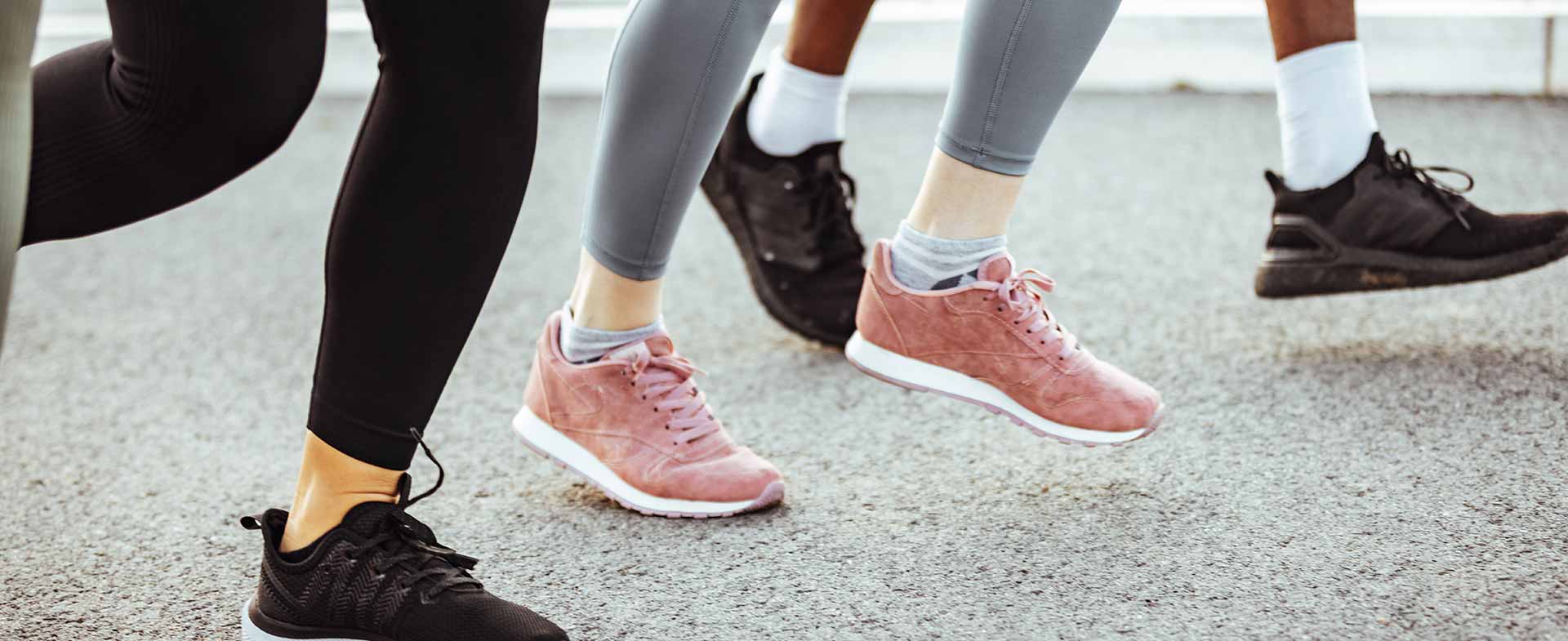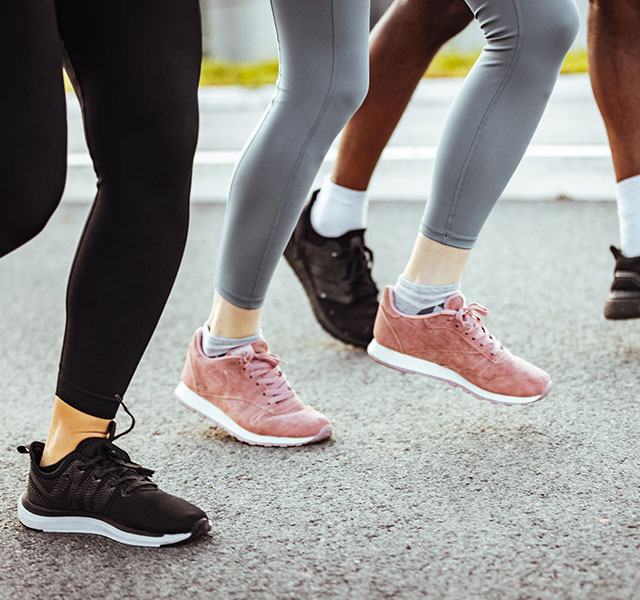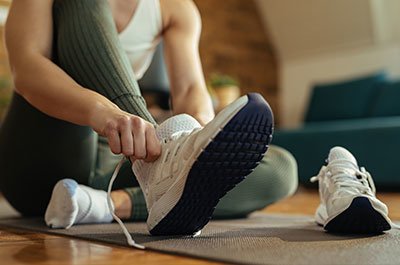Whether you prefer running, spin class or long walks through the neighborhood, selecting the proper footwear for exercise is essential. Add to that factors like foot type, arch support – and even fleeting footwear trends – and it’s no surprise people often feel overwhelmed when looking for a good pair of athletic shoes.
“As podiatrists, we often see patients who choose style over structure—shoes that look great but offer minimal support,” says Nicole Brouyette, DPM, a podiatrist at Henry Ford Health. “While fashion has its place, your long-term foot health depends on prioritizing form and function.”
While general-purpose athletic shoes are fine for casual activity, specialized workouts—like running, cycling and racquet sports—demand footwear designed specifically for those movements. Wearing the wrong shoe may force your joints and soft tissues to compensate for inadequate support, leading to overuse injuries.
The Best Shoes For Your Workout
Here, Dr. Brouyette shares what to look for in your shoes, depending on your activity level and type.
1. Running. Runners need shoes that offer adequate arch support and heel cushioning. For most, a moderate heel drop is ideal. Excessive cushioning, especially in recreational runners, can lead to poor running mechanics such as a heavy heel strike, which increases the risk of overuse injuries like shin splints and stress fractures. If you're running short distances or doing light cardio, a quality cross-trainer may work—but always ensure it has proper heel support and midfoot stability.
2. Cycling/spinning. Whether you're biking outside or participating in a spin class, footwear matters. Clip-in cycling shoes can improve performance and reduce strain on your foot and ankle. In a spin class, check with the gym to see whether they use clip-in pedals or a toe-cage system so you can find compatible shoes. Improper footwear in cycling can lead to tight calf muscles and forefoot pain or numbness due to pressure on the nerves and metatarsal heads (the bones in your foot located closest to the toes).
3. Weightlifting. Lifting shoes are unique—they have rigid soles and elevated heels to allow for proper squat depth and spinal alignment. They aren’t suitable for cardio or agility training, but they provide the necessary stability for heavy lifts. Without this type of support, your foot may roll or collapse when lifting, increasing the risk of injury.

Foot and Ankle Care At Henry Ford Health
4. Working long hours on your feet. This might not be a sport – but it definitely impacts your foot health. Whether you’re a healthcare worker, teacher or just spend a lot of time walking or standing, it’s critical to find shoes with excellent shock absorption, firm arch support and a deep heel cup. Standing for extended periods in unsupportive shoes can lead to plantar fasciitis, Achilles tendinitis and even knee or lower back pain. Choose shoes designed for all-day wear and avoid ultra-soft soles that collapse over time and offer little support.
5. Racquet sports. Sports like tennis and pickleball require shoes with reinforced lateral support (or support on the outside of the foot, where your smallest toe is) and rounded soles for multidirectional movement.
Wearing a running shoe during these activities, which is designed for straight-line motion, can lead to ankle sprains or stress on the knees. If you have pre-existing lower limb issues, consider orthotic inserts for added support. Wearing the wrong shoes can contribute to a host of lower limb problems, including plantar fasciitis, shin splints, stress fractures, tendinitis, Achilles pain or even knee and hip dysfunction. Proper footwear maintains proper alignment, reduces fatigue and protects against repetitive strain injuries.
“Bottom line: Invest in footwear that matches your activity and supports your individual foot structure,” says Dr. Brouyette. “When in doubt, consult a podiatrist—we can assess your gait, foot shape and activity needs to guide you toward the right shoe.”
Reviewed by Nicole Brouyette, DPM, a foot and ankle surgeon who sees patients for podiatric needs at Henry Ford Hospital — Detroit, Henry Ford Medical Center — Fairlane and Henry Ford Medical Center – Pierson Clinic.



